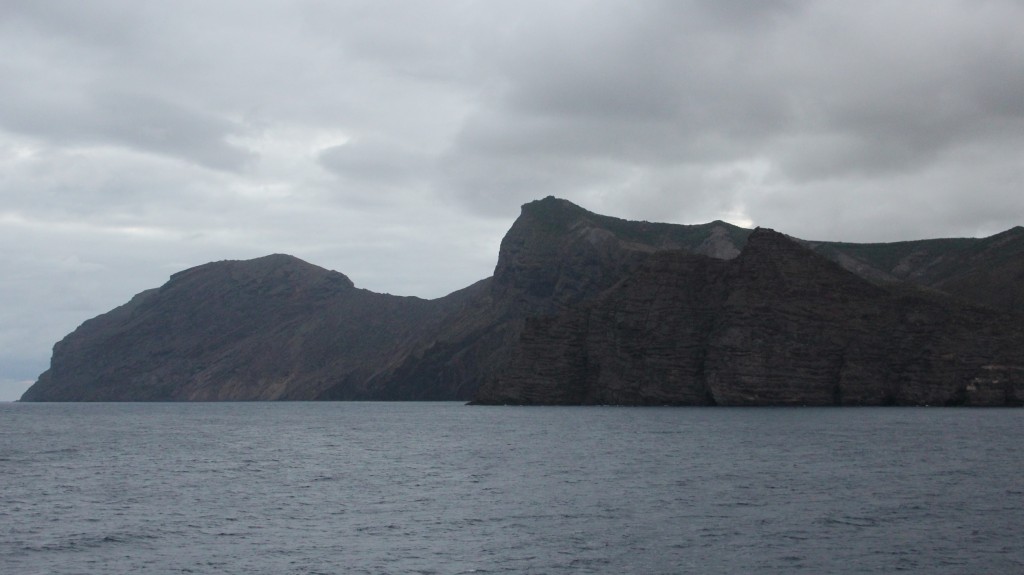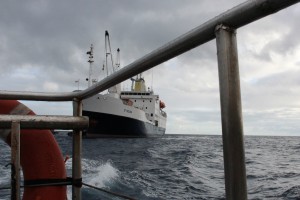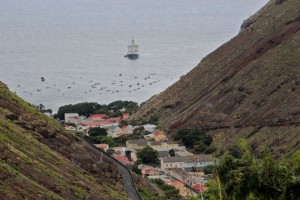 After five relaxing days on calm seas, we rose early to capture a true Napoleonic experience: our first sight of the island’s dark cliffs at dawn. Although my camera couldn’t do it justice, St Helena’s forbidding silhouette didn’t disappoint me. The barren rock faces do indeed rise out of the sea like prison walls.
After five relaxing days on calm seas, we rose early to capture a true Napoleonic experience: our first sight of the island’s dark cliffs at dawn. Although my camera couldn’t do it justice, St Helena’s forbidding silhouette didn’t disappoint me. The barren rock faces do indeed rise out of the sea like prison walls.
 Napoleon’s own remark on seeing the island was that he “should have stayed in Egypt,” referring to his 1798 Middle Eastern campaign. Instead, in 1799, he rushed back to France to maneuver his ascent into political power. Two decades later, he died in exile on this island.
Napoleon’s own remark on seeing the island was that he “should have stayed in Egypt,” referring to his 1798 Middle Eastern campaign. Instead, in 1799, he rushed back to France to maneuver his ascent into political power. Two decades later, he died in exile on this island.
As in Napoleon’s time, ships must anchor in the bay and ferry their passengers to the Jamestown wharf.
 The town itself is a few narrow streets stretched along a sharp trough between two steep hills. Home to nine hundred of the island’s four thousand residents, it’s the capital and commercial center. Although St Helena is a British territory, in testament to the man’s charisma, its main street is named after their great enemy, Napoleon.
The town itself is a few narrow streets stretched along a sharp trough between two steep hills. Home to nine hundred of the island’s four thousand residents, it’s the capital and commercial center. Although St Helena is a British territory, in testament to the man’s charisma, its main street is named after their great enemy, Napoleon.

Good luck on finding a publisher for your novel. Hope it is romantic.
This link might be of interest.
https://napoleonlive.info/see-the-evidence/the-evidence-photographs/
Thanks. Parts of it will, indeed, be romantic. As Napoleon himself is quoted as saying, “[his] life could have been a novel.”
Pingback: Finding Napoleon in London Admiral Sir George Cockburn
Pingback: A Childhood in 19th Century St Helena - Margaret Rodenberg